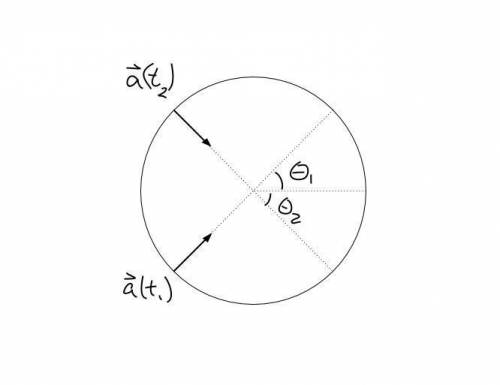
Physics, 09.07.2019 06:20 emmarieasimon
At t1 = 2.00 s, the acceleration of a particle in counterclockwise circular motion is 6.00 i + 4.00 j m/s2 . it moves at constant speed. at time t2 = 5.00 s, its acceleration is 4.00 i - 6.00 j m/s2 . what is the radius of the path taken by the particle if t2-t1 is less than one period?

Answers: 2


Other questions on the subject: Physics

Physics, 21.06.2019 22:30, IDespretlyneedhelp
Solar cell a produces 100 joules of energy, when a light source is shown on it for 3 minutes. solar cell b produces 200 joules of energy when the same light source is shown on it for 5 minutes. which solar cell works better? a) solar cell b, because it produces more energy. b) solar cell b, because it generates more power. c) solar cell a, because it produces energy quicker. d) solar cell a, because it generates a greater wattage. eliminate
Answers: 2

Physics, 22.06.2019 07:00, lujaynsparkles
Which articulations allow for greatest range of motion?
Answers: 1

Physics, 22.06.2019 10:30, SauceyNaee
Aparticle moves in the xy plane with constant acceleration. at time zero, the particle is at x = 6 m, y = 8.5 m, and has velocity ~vo = (9 m/s) ˆı + (−2.5 m/s) ˆ . the acceleration is given by ~a = (4.5 m/s 2 ) ˆı + (3 m/s 2 ) ˆ . what is the x component of velocity after 3.5 s? answer in units of m/s.
Answers: 1

Physics, 22.06.2019 11:00, tdahna0403
Consider a system to be two train cars traveling toward each other. what is the total momentum of the system before the train cars collide? kg • what must the total momentum of the system be after the train cars collide? kg •
Answers: 2
You know the right answer?
At t1 = 2.00 s, the acceleration of a particle in counterclockwise circular motion is 6.00 i + 4.00...
Questions in other subjects:


Mathematics, 28.05.2021 17:00





Mathematics, 28.05.2021 17:00

Computers and Technology, 28.05.2021 17:00

Mathematics, 28.05.2021 17:00

 , the acceleration vector has direction
, the acceleration vector has direction  such that
such that
 the acceleration has direction
the acceleration has direction  such that
such that
 . That is, the measure of the major arc between the particle's positions at
. That is, the measure of the major arc between the particle's positions at  is the time it takes for the particle to traverse 3/4 of the circular path, or 3/4 its period.
is the time it takes for the particle to traverse 3/4 of the circular path, or 3/4 its period.
 is the radius of the circle and
is the radius of the circle and  is the period. We have
is the period. We have





